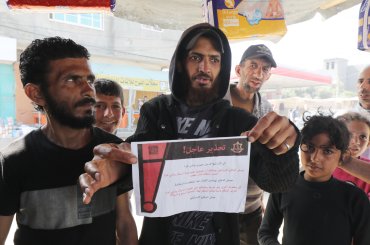Realist Mahan Abedin of Jamestown writing at Juan Cole’s site on the Illusion of a limited war with Iran:
A top priority for the IRGC [Islamic Revolutionary Guard Corps] high command is to respond so harshly and decisively so as to deter the Americans from a second set of strikes at a future point. The idea here is to avoid what happened to Iraq in the period 1991-2003, when the former Baathist regime was so weakened by sanctions and repeated small-scale military attacks that it quickly collapsed in the face of American and British invading armies.
The range of predictable responses available to the IRGC high command include dramatic hit and run attacks against military and commercial shipping in the Persian Gulf, the use of mid-range ballistic missiles against American bases in the region and Israel and a direct assault on American forces in Iraq and Afghanistan. All these options are likely to be used within 48 hours of the start of hostilities.
What is less predictable is the response of the IRGC Qods Force, which is likely to be at the forefront of the Pasdaran’s counter-attack. One possible response by the Qods force is spectacular terrorist-style attacks against American intelligence bases and assets throughout the region. The IRGC Qods Force is believed to have identified every key component of the American intelligence apparatus in the Middle East, Afghanistan and Pakistan.
They are likely to put this information to good use, especially since the Qods Force suspects that the CIA had a hand in last October’s Jundullah-organised suicide bombing targeting IRGC commanders in Iran’s volatile Sistan va Baluchistan province.
The IRGC navy will also play a key asymmetrical role in the conflict by organising maritime suicide bombings on an industrial scale. By manning its fleet of speedboats with suicide bombers and ramming them into American warships and even neutral commercial shipping, the Pasdaran will hope to close the Strait of Hormuz, through which nearly 40 percent of world crude oil supplies pass.
The combination of these asymmetrical forms of warfare with more conventional style missile and even ground force attacks on American bases in the region will likely result in thousands of American military casualties in the space of a few weeks. The IRGC has both the will and wherewithal to inflict a level of casualties on American armed forces not seen since the Second World War.
Even if the United States manages to destroy Iran’s nuclear infrastructure and much of the country’s military assets, the IRGC can still claim victory by claiming to have given the Americans a bloody nose and producing an outcome not dissimilar from the Israeli-Hezbollah military engagement in the summer of 2006.
The political effect of this will likely be even more explosive than the actual fighting. Not only will it awaken the sleeping giant of Iranian nationalism, thus aligning the broad mass of the people with the regime, it will also shore up Iran’s image in the region and prove once and for all that the Islamic Republic is prepared to fight to the death to uphold its principles. Suddenly Iran’s allies in the region – particularly non-state actors like Hezbollah and Hamas – would stand ten feet tall.

